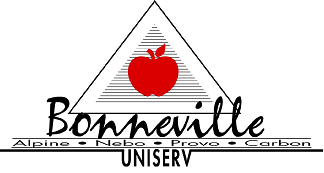The New Groove
By Brooke Alderks
Ever find that your students can’t keep their arms and legs still? Most of us discourage such behavior in the classroom. Not this teacher. Linda Rossiter of Spring Creek Elementary finds getting those wiggles out daily is a huge benefit. Every day for 30 minutes, her class of 22 first graders visits the gym where they warm up, join hands, and get their energy out.
Some may argue that dance is not in the curriculum and that it’s unnecessary. Linda finds a way to integrate dance into the core subjects. Vocabulary, math, science, and social skills are taught through dance. Ms. Rossiter comments, “If for example, you teach the water cycle through dance, the students will remember it. Teach it with a piece of paper and it may be forgotten.”
Studies have shown that dance increases a child’s ability to listen and to focus. Linda states, “Dance has helped my students' learn in an extreme way. It trains their brain to learn.” Not only do they learn, but students enjoy themselves and learning is a lot more interesting and fun. Teachers who use dance and other fine arts to teach core curriculum are finding that teaching is less mundane. Linda states, “I have found a new joy in teaching.”
Finding joy in wiggling children? It’s possible, but how? Brain Dance is a program Linda has been using for 2 years. Learn about the program and founder Anne Green Gilbert at www.creativedance.org. Teaching has a new groove, so why not join it?
By Brooke Alderks
Ever find that your students can’t keep their arms and legs still? Most of us discourage such behavior in the classroom. Not this teacher. Linda Rossiter of Spring Creek Elementary finds getting those wiggles out daily is a huge benefit. Every day for 30 minutes, her class of 22 first graders visits the gym where they warm up, join hands, and get their energy out.
Some may argue that dance is not in the curriculum and that it’s unnecessary. Linda finds a way to integrate dance into the core subjects. Vocabulary, math, science, and social skills are taught through dance. Ms. Rossiter comments, “If for example, you teach the water cycle through dance, the students will remember it. Teach it with a piece of paper and it may be forgotten.”
Studies have shown that dance increases a child’s ability to listen and to focus. Linda states, “Dance has helped my students' learn in an extreme way. It trains their brain to learn.” Not only do they learn, but students enjoy themselves and learning is a lot more interesting and fun. Teachers who use dance and other fine arts to teach core curriculum are finding that teaching is less mundane. Linda states, “I have found a new joy in teaching.”
Finding joy in wiggling children? It’s possible, but how? Brain Dance is a program Linda has been using for 2 years. Learn about the program and founder Anne Green Gilbert at www.creativedance.org. Teaching has a new groove, so why not join it?

